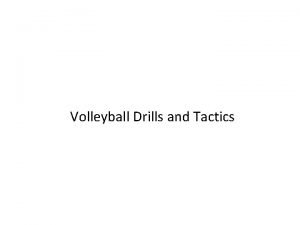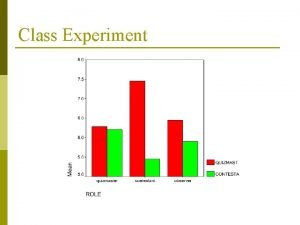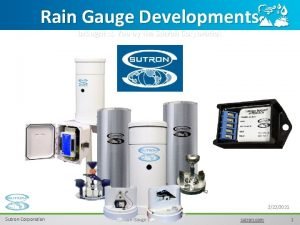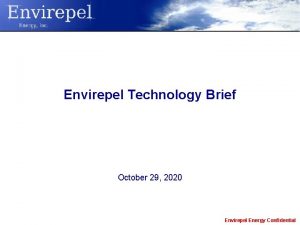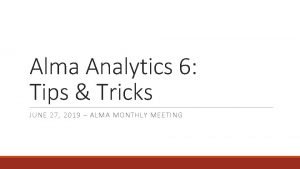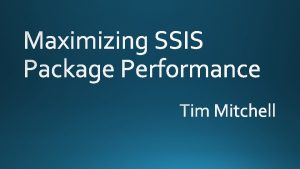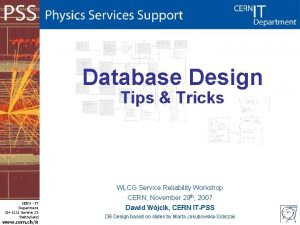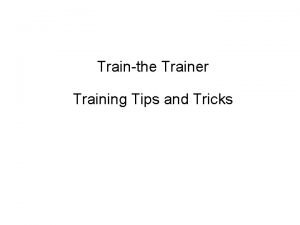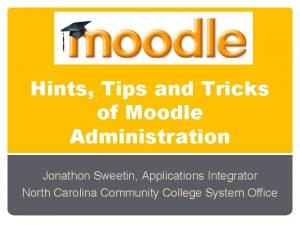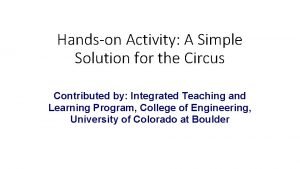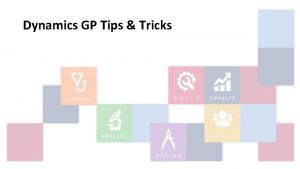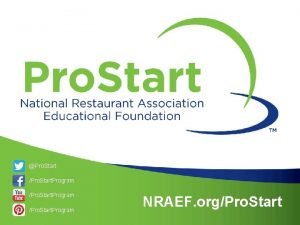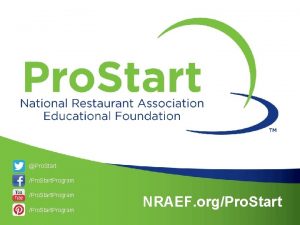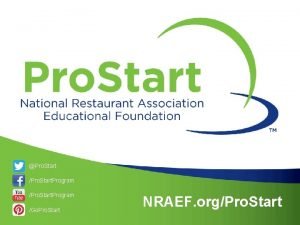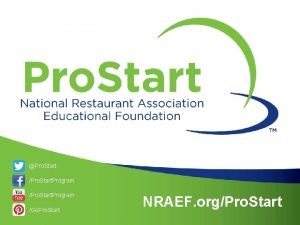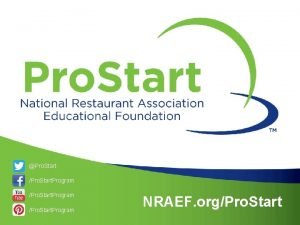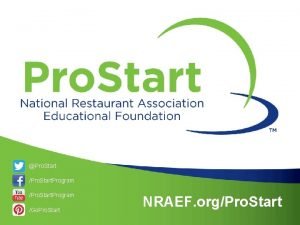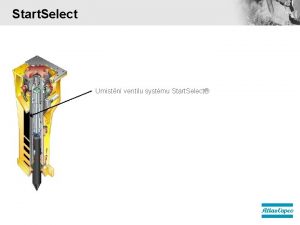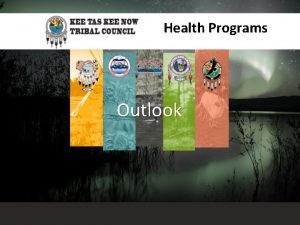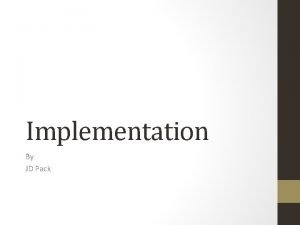Implementation Tricks From Start Up to the Tipping






















































































- Slides: 86

Implementation Tricks: From Start. Up to the Tipping Point Ross Ehrmantraut, RN, CCRN Jeanie Haggan, RN, MHA, MS, CPHQ Kathy J. Nunemacher, MSN, RN, CPHQ

Start With a Focus Ross Ehrmantraut, RN, CCRN Patient Safety Officer Harborview Medical Center – UW Medicine Seattle, WA

Harborview Medical Center Ø Harborview Medical Center is owned by King County, governed by the Harborview Board of Trustees, and managed under contract by the University of Washington Confidential – QI

WAMI Region Ø Only Level I adult and pediatric trauma and burn center in region l Washington, Alaska, Montana and Idaho. Confidential – QI

Harborview Medical Center Licensed beds Ø Employees Ø Physicians Ø Admissions Ø ED visits Ø Clinic visits Ø Surgery cases 413 4, 432 1, 216 19, 424 65, 515 224, 769 13, 455 Ø Approximately $190 million in charity care in 2011 Confidential – QI

Regional Burn Center Ø 45 bed Burn Center l l 18 Critical Care 27 Acute Care Ø Approximately 200 staff/MDs l RNs, Social Work, Residents, Dieticians, pharmacists, PT/OT, housekeepers, CNAs, rehabilitation psychologists

Communication Breakdowns Ø Culture of Safety identified communication and nonpunitive environment were biggest issues • Utilized Team Perception Questionnaire l l Further review found a breakdown in communication between disciplines Had tried other solutions • Consulting companies

Will Team. STEPPS help change the culture? Ø Medical Director of Burn Center met with PSO, who is a Master Trainer about implementing Team. STEPPS Ø After initial discussions, a meeting was set up with Burn Team Leadership along with hospital administration l The goal was to get commitment from administration and BTL

Development of the Change Team Ø Staff RNs Ø Physical Therapist Ø Occupational Therapist Ø Pharmacist Ø MD Ø Nurse Manager Ø Nurse Practitioner

SWOT Analysis STRENGTHS WEAKNESSES (i. e. Attributes of our team and our systems that should assist in achieving our project goal) (i. e. Attributes of our team and our systems that could deter us in achieving our project goal & may need to be addressed) “Can do” attitude Rounds 2 X per week Familiarity of staff & MDs Clinic > 8 E ICU > 8 E Expectations of positive patient outcomes International reputation MD buy-in with splinting Patient Advocacy – patients have many strong advocates Interdisciplinary/Multi-disciplinary approach Exposure to Attendings Pride in our work Stress during wound rounds – difficulty in communication o Focus on wounds o Effects on patient o Discomfort with asking questions Staffing Level & Experience (insufficient critical thinking skills) Openness to new ideas Paternalistic attitudes toward DC – “bomb proof” Inconsistency of treatment providers Unclear expectations during grand rounds Welcomeness of new information during grand rounds RN buy-in – splinting Comparison of MD personality and practice Increased expectations of MDs (due to a lot of presence) Inflexible older staff Feedback perceived as negative – also opportunity Inconsistent practice standards OPPORTUNITIES THREATS (Conditions that can be leveraged to assist in achieving our project goal) (Conditions that can deter us in achieving our project goal & may need to be addressed) RN introduction during wound rounds More team building opportunities Ongoing education – splinting/wound care Improve critical thinking skills Provide feedback to “close the loop” with bedside staff Improve cross discipline communication Peoples’ (i. e. staffs’) anxiety to get their priorities met – interrupts other priorities brought up with wound rounds Ongoing educational needs Staffing matrix on 8 E different Staff worn out - compassion, fatigue, burns/kids is emotionally draining

Burn Center – Team. STEPPS Implementation Project Goal To improve trust and communication across disciplines in order to increase patient safety; improve patient outcomes; and improve patient and staff satisfaction. Stress during wound rounds – difficulty in communication. Environmental Scan/SWOT Analysis (Focus on Splints and Wound Rounds) o Focus on wounds STRENGTHS WEAKNESSES (i. e. Attributes of our team and our systems o Effects on patient that should assist in achieving our project goal) that could deter us in achieving our project goal & may need to be addressed) o Discomfort with asking “Can do” attitude Stress during wound rounds – difficulty in communication Rounds 2 X per week o Focus on wounds questions Familiarity of staff & MDs o Effects on patient Clinic > 8 E ICU > 8 E Expectations of positive patient outcomes International reputation MD buy-in with splinting Wound rounds improved flow and communication over the last few years Patient Advocacy – patients have many strong advocates Interdisciplinary/Multi-disciplinary approach Exposure to Attendings Pride in our work RN introduction during wound rounds o Discomfort with asking questions Staffing Level & Experience (insufficient critical thinking skills) Openness to new ideas Paternalistic attitudes toward DC – “bomb proof” Inconsistency of treatment providers Unclear expectations during grand rounds Welcomeness of new information during grand rounds RN buy-in – splinting Comparison of MD personality and practice Increased expectations of MDs (due to a lot of presence) Inflexible older staff Feedback perceived as negative – also opportunity Inconsistent practice standards Peoples (i. e. staffs’) anxiety to get their priorities met – interrupts other priorities brought up with wound rounds OPPORTUNITIES THREATS (Conditions that can be leveraged to assist in achieving our project goal) (Conditions that can deter us in achieving our project goal & may need to be addressed) RN introduction during wound rounds More team building opportunities Ongoing education – splinting/wound care Improve critical thinking skills Provide feedback to “close the loop” with bedside staff Peoples’ (i. e. staffs’) anxiety to get their priorities met – interrupts other priorities brought up with wound rounds Ongoing educational needs Staffing matrix on 8 E different Staff worn out - compassion, fatigue, burns/kids is emotionally draining

Initial Tools implemented Ø Briefs Ø Huddles Ø Debriefs Ø Call outs Ø Check backs Ø Cross checks

With Early Success Ø The momentum gave us an opportunity to: l Improve “close the loop” communication and improve splint therapy • • • l l Call out Check back Cross check Implement debriefs for post burn resuscitations Include family and patients in Team. STEPPS training for hand hygiene

Start With A Focus Ø Identify one area/project and focus with a few tools l Expand from these successes

Take home message Ø Utilize culture of safety data to identify specific areas for improvement Ø Recruit leadership champion (i. e. Medical Director of Burn Center) Ø Encourage completion of SWOT analysis early on to help establish a focus Ø Start with a focus and expand out over time

Thank You Questions?

Quick Steps to Team STEPPS Jeanie Haggan, RN, MHA, MS, CPHQ Patient Safety Coordinator Adult Emergency Department Yale-New Haven Hospital

• Flagship member of the Yale New Haven Health System • Not-for-Profit Hospital Founded in 1826 • Located in New Haven, CT • 1541 Beds • Primary Teaching Hospital of the Yale School of Medicine • Magnet-Designated by the ANCC

Yale New Haven Hospital Emergency Department • York Street Campus – Adult ED – Level I Trauma Center – 85 K Visits Annually – 82 Exam Rooms • • 4 Resuscitation / Trauma Rooms 6 Chest Pain Center Beds 6 Urgent Care Beds 12 Crisis Intervention Beds • Shoreline Medical Center – Adult & Pediatrics – 25 K Visits Annually – 9 Exam Rooms + 4 Fast Track

Our Team STEPPS Journey

Shift Towards a Culture of Safety in 3 Continuous Phases

Phase I Assessment Goal - To determine readiness to undertake Team. STEPPS initiative. Key Actions Department Responsibility • Collect data to support the need – Safety Culture Survey – Data Measures • Team Perceptions Questionnaire • Team Observation Tool • Dept data - (pt satisfaction scores, LOS, Door to Admission) • • • Define process(es) to fix Schedule Retreat for Stakeholders with SYN: APSE Allocate Resources and Personnel – Local Leadership & Staff – Simulation Center Team

Why Teamwork Training in ED at YNHH?

Leadership Retreat – May 2012 • Objectives: – To provide an historical overview of Teamwork Training – To Discuss rationale for Teamwork Training in the AED – To learn & practice specific teamwork tools and strategies – To prioritize issues using the safety culture survey data and define goals of AED teamwork training initiative

Leadership Retreat • Key Department Leadership & Stakeholders – Department Chair & Vice Chair – Medical Director – Nursing Service Director – Patient Service Manager – Service Line Educators – Patient Safety Coordinator

Phase II Planning, Training, and Implementation Goals – (1) to develop an Action Plan for Initiative Key Actions Department Responsibility • Identify Target Audience • Create a Change Team – Leadership – Identify Faculty (1 MD/1 RN per 80 participants) – Coordinator / Master Scheduler Key Actions Department and SYN: APSE • Communication Plan • Train Faculty • Design the Intervention • Develop Plan for Testing Effectiveness • Develop an Implementation Plan (Department Specific SBTT) • Develop Plan for Sustained Continuous Improvement

Phase II Planning, Training, and Implementation Goal – (2) to conduct simulation-based team training (SBTT) Key Actions Department and SYN: APSE • Determine Training Strategy – Determine # of Courses / Frequency – Design Clinical Scenarios – Determine Location – Schedule Interdisciplinary Participants

Planning Team • MD Champion / Director Patient Safety & Quality • Patient Service Director • Pt Safety Coordinator • Service Line Educator • SYN: APSE Director of Simulation • SNY: APSE Simulation Learning Consultant

Course Development – June 2012 • Three Hour Program – 1 hour didactic – 2 Simulated Scenarios – Video Based Debriefing Sessions • Didactic Section – Brief history of team training & application in health care / ED setting – Team STEPPS tools with discussions on applications in our ED • 2 Simulated Scenarios – Utilized event reporting data and peer reviewed cases – Incorporated opportunities to utilize communication tools

Scenario Design and Trigger Events Trigger - A prompt to elicit a targeted response by a learner • Embed triggers within a scenario • Allows facilitator to control scenario events to ensure learning objectives are met • Focuses attention on predetermined critical events and targeted behaviors (Team STEPPS tools) 30

“William James” • “The patient will initially present with vital signs & history that point to pneumonia. He is actually in early sepsis. During the scenario, he will have a change in status (progressive hypoxia and hypotension with persistent tachycardia). By the end of the scenario, we hope that all staff will have a shared mental model that the patient has early sepsis. Team members will enter and exit at specified times to simulate actual practice. However, a critical lab value will be introduced when the nurse is out of the room. We will observe to see if this data is shared to create a shared mental model of patient’s clinical diagnosis. At the end of the scenario we will introduce a trigger for patient identification related to antibiotic delivery by a confederate RN to assess cross-monitoring and assertion. “

Video-Based Debriefing • Fosters selfreflection • Clarifies what to set the context for why • Allows facilitator to mark video with Trigger events

Faculty (17) • Each Course was taught by RN / MD (PA) pair – 6 Attending MDs – 3 ED Staff RNs – 2 ED Techs – 2 Service Line Educators – 1 PA – 1 Patient Safety Coordinator – 1 Patient Service Director – 1 Patient Service Manager

Faculty Development – July 2012 • 8 Hour Training Course – Trainers participated in the 3 hour course as a student – Walk through of the course content from trainer perspective • Confirm understanding of materials – Feedback & Tweaking of Course Materials • Follow Up Practice Sessions / Run Through • Observations (1 -2 sessions) • Ongoing mentoring & support

Schedule : August – October 2012 • 12 Weeks - 46 Three Hour Sessions • Monday / Wednesday • Three sessions per day – 08: 00 - 11: 00 – 12: 00 – 15: 00 – 16: 00 – 19: 00 • Required all sessions be multidisciplinary

Scheduling • Coordinated scheduling via: – Lead PA for Midlevel Providers Dropbox. com – Administrative Assistant for Medical Staff – Chief Resident - Residents – Service Line Educator for RNs and EDTAs • Master Schedules for Trainers & Participants • Pre-Cognitive Materials & Welcome Letter

Project Coordinator • Master Schedules – Faculty & Participant • Ensures full complement of caregivers • Sends reminders / confirmations / Precognitive materials • Monitor attendance & rescheduling • Called Huddles & Debriefs with Planning Team • 50, 000 ft view

Phase II Planning, Training, and Implementation Goal – (2) to conduct simulation-based team training (SBTT) Key Actions Department & SYN: APSE • Determine Training Strategy – Determine # of Courses / Frequency – Design Clinical Scenarios – Determine Location – Schedule Interdisciplinary Participants 180 160 YSC & SMC AED Team Training Participants Aug – Oct 2012 160 140 Total Participants: 364 Count includes 17 facilitators 94% Staff Trained 120 100 80 68 60 48 43 40 31 20 11 1 2 Pharmacist Other 0 RN EDTA Resident MD Attending MD Midlevel IA

ED TT Course Feedback Aug – Oct 2012 Overall 4. 5 Apply Learned Knowledge 4. 7 Debriefing 4. 7 Practice Skills 3. 7 Scenarios Realistic 4. 5 Course Met Expectations 4. 6 Stated Objectives Met 4. 7 0. 0 0. 5 1. 0 1. 5 2. 0 2. 5 3. 0 3. 5 4. 0 4. 5 5. 0

Safety Culture Survey SMC 2011 / 2013

Results for SMC 2013 SAQ - Shoreline 2011 2013 In this unit, people 81. 5% treat each other w/ 50 th respect 83. 3% 75 th People support one 85. 2 % another on this unit 25 th 95. 8% 90 th When a lot of work needs to be done quickly, we work together as a team to get the work done 100% Stretch 88. 9% / 50 th

Safety Culture Survey for AED YSC 2011/2013

Phase II Planning, Training, and Implementation Goal – (3) implement a Team. STEPPS Intervention. Key Actions Department Responsibility • Implement Improvement Intervention Tools Adopted by AED • Formal Uninterrupted briefs at change of shift • Debriefing at end of shifts • Problem solving huddles • Communication Tools – Call-out / check-back (closed loop communication) / 2 -Challenge / CUS • Mutual Support / Task Assistance

Phase III Sustain, Monitor, Coach, Integrate Goal - to sustain and spread improvements in teamwork behavior and in associated clinical processes and outcomes resulting from the Initiative Key Actions Department Responsibility with SYN: APSE Support • Teamwork Coaching • Integration of tools into Existing Processes • Reinforcement and Rewards • Continuous Improvement • Interval simulation practice with SYN: APSE

Lessons / Key Take Aways • Timing of Program – Department faced multiple competing major projects • Implementation of new Hospital-wide electronic medical record (Epic) • Completion of construction / renovation project & work flow changes – Not enough time for Team STEPPS Culture to be embedded in the Department way of life

Lessons / Key Take Aways • Importance of Leadership Retreat • Apply Team STEPPS to Team STEPPS planning! – Project Coordinator role identification • Challenges of Scheduling – Master Schedule – Access to Master Schedule • Faculty practice sessions • TPQ Data Collection – Use Online survey

Questions? Contact Info: Jeanie. haggan@ynhh. org 203 -688 -9215


Team. STEPPS: From Start up to Tipping Point Kathy J. Nunemacher, MSN, RN, CPHQ Bethlehem, PA June 12, 2013

St. Luke’s University Hospital & Health Network § § § Large academic tertiary care system with six campuses in PA and NJ Only Medical School in the Region: Temple-St. Luke’s, affiliated with Temple University Oldest Diploma School of Nursing in Country plus affiliation with Moravian College Department of Nursing

Objectives § The participant will understand the term scalability and it’s application to teaching team. STEPPS concepts and ideas § The participant will understand how to maintain oversight of the Team. STEPPS program roll-out and be exposed to strategies to address varying levels of adoption. § The participant will learn how one hospital system leveraged technology to meet the needs for ongoing Team. STEPPS implementation

Why Team. STEPPS? § Potential High Risk Climate for Safety and Liability Claims § Need to get away from time honored medical model § Time is now to CHANGE the way we think about delivering Healthcare with ultimate goal……… A highly reliable TEAM

Scaling a Good Idea- Teaching Team. STEPPS § Ideas are just that …. ideas but Execution matters § Small, simple steps – scaling yourself, your teams and the concept § Scalability is …a desirable property of a system, a network or a process, which indicates its ability to either handle growing amounts of work in a graceful manner, or to be readily enlarged

Culture of Learning and Safety

Team. STEPPS Initial Pilot Project § Started with AHRQ HSOPS Baseline Survey- Nov. 2008 § Team. STEPPS training pilot in Obstetrics 2009 § Resurvey: HSOPS - 2010, HSOPS - 2011, smaller home-grown elearning survey 2012 § Phased in roll out based § Service Line approach….

Timeline & Main Concepts Teach Spread Sustain • Baseline Culture of Safety Survey • Fundamentals/Train the Trainer Sessions • Staff Roll out Sessions • Specific Tools Highlighted to make it Stick • Re-survey at approx. 18 months after initiation • Develop annual competency – in person for new staff and residents and online for others

Departmental Gannt Chart

Strategies for Successful Roll Out § Required logistics team on floor for streamlined management of roll-outs § Managers required to develop written action plan and report back § Team. STEPPS tools practiced - ex. , Briefs, Huddles, and PERRT – perinatal rapid response team § Formal Team. STEPPS posters ordered and pocket guides on units

Pictures Can Be Memory Aids… First picture tells one story…. . Team Work & Collaboration

Professional Posters Created


Oversight of programs § Team. STEPPS consultants= Quality Resources Staff § Face to Face meeting with managers § Q. R. support for Logistics' Team § “Close the Loop” communications § Team. STEPPS specifics such as SBAR and Huddles as a “Way of Life” § Measure and report your success mmm…. maybe I should call a Perinatal Rapid Response? Important! Mandatory Second Stage of Labor Huddles start Dec. 15, 2010!

Spreading the Concepts § Tipping Point – (disambiguation) Malcome Gladwell (2000) defines tipping point as the “moment of critical mass, the threshold, the boiling point” § Ideas, processes and even behaviors can spread like viruses --- the law of the few (80/20 principle) § Power of context – “Are you sensitive to what is going on around you” § Need the stickiness factor – those cute penguins!

Tipping Point § Strong Leadership Support - Obstetrics and Vice President of Quality § VP/CQO – decides which high-risk areas go next for Team. STEPPS training sessions and roll out § Commitment from managers and other interprofessional leaders to make the training happen § Roll-outs – 2 -4 months, quick implementation time § Continue to monitor…. .

Further Roll-outs Planned Confidential Pursuant to Pa. Stat. Ann. Tit 63 & 425. 1 et. al.

Have we reached the tipping point? § From a Culture of safety to a Just Culture of Safety! § Success of Obstetrics Department year after year, encouraged spread to other departments, campuses etc. § Keep emphasizing Kotter’s Change Management Concepts § Requests from residency program, other departments for training (bottom up requests have started…. . ) § Plan is in place for train the trainer concepts, pilot in place for online course

Leveraging Technology with E-learning § Idea for e-learning Team. STEPPS refresher since beginning but timing wasn’t right… § Right people in the right positions – expertise of web designer! § ROI analysis submitted to allow project approval § Meetings to create intranet site for department and network wide education § Presentations customized and recorded by nurse educator/champion, quality improvement coordinator and residency education program director

Getting the word out……

Getting Started- Online

Department Site – My courses Team. STEPPS

Course Instructions

Website Includes Links to Policies

The Essentials and Change Management

Monitoring the Course § Site allows instructors to send and receive emails from participants § Log of communications, reminders and or special concerns § Interactive components allow us to receive feedback on staff’s perceptions as well as see how they are navigating the course § Pre and Post test results and Climate of Safety Survey § Evaluation of the Course

Pre-test results – Able to sort by discipline

Post Test Results § Favorable § Allowed two attempts § Different tests for professional vs. support staff § If unable to pass ……………. remediate and retest § Everyone on the team required to participate!

Team. STEPPS e-learning Compliance * Midwifery service – staff on FMLA

HSOPS Survey: Obstetrics Department Confidential Pursuant to PA STAT ANN Tit 63 & 425. 1 et. Al

OB Satisfaction Scores § OB units scoring in the 75 th and 90 th percentiles on most domains in HCAHPS Survey against OB peer hospitals! § Best Satisfaction Scores in the Network! § Data for CY 2012 and past 15 months!

Women’s Service Line Outcomes HAP AWARD: Pt. Safety National Presentations in Obstetrics each Year since 2009 Team. STEPPS E-learning Poster at NAHQ Conference in October, 2013 Improved Maternal and Neonatal Outcomes & Reduced NICU Admissions

Network Outcomes § Seven Hospital and Health System Association of Pennsylvania Achievement Awards in 3 years (2010 – 2012), most ever by one organization.

Striving for Teamwork and Growth? § § § Innovative? Appropriate? Cost-Effective? Demonstrate Impact? Sustainability? Ability to Replicate?

Take Away Message § Change is Hard, so be relentless… § Scaling Team. STEPPS ideas can work! - gains should be slow…. § Keep a GANNT chart and Quality Resources Department oversight in place § Leveraging technology can be a timely strategy to keep ideas fresh and ensure continuous learning § Keep a Positive Attitude and others will soon catch on to the change efforts so you can get to the Tipping Point……A Team Approach to Safety!

References § Gawande, A. (2010). The checklist manifesto: How to get things right. Profile Books. § Gladwell, M. (2006). The tipping point: How little things can make a big difference. Little, Brown. § Henriksen, K. , Battles, J. B. , Keyes, M. A. , Grady, M. L. , King, H. B. , Battles, J. , . . . & Salisbury, M. (2008). Team. STEPPS™: Team strategies and tools to enhance performance and patient safety. § Kohn LT, Corrigan JM, Donaldson MS. To err is human. Washington, DC: National Academies Press; 1999 § Kotter, J. P. , & Rathgeber, H. (2006). Our iceberg is melting: Changing and succeeding under any conditions. St Martins Press. § Marx, D. A. (2009). Whack-A-Mole: The price we pay for expecting perfection (p. 54). A. Bray (Ed. ). Plano, TX: By Your Side Studios.

Acknowledgements: I would like to thank the following individuals for their assistance, involvement and support of the Team. STEPPS elearning pilot program § James Anasti MD – Team. STEPPS Physician Lead, OB Residency Program Director § Anil Pai – Web Designer, Development Dept. § Melanie Martin BSN, RN – Team. STEPPS instructor and Educator, Obstetrics. § Joseph CL Merola, MD, MPH – Chief, Obstetrics § Donna Sabol MSN, RN – VP/CQO – Quality Resources

Thank you Questions? Kathy J. Nunemacher St. Luke’s University Health Network Kathy. Nunemacher@sluhn. org 484 -526 -4129
 It's gotta start somewhere it's gotta start sometime
It's gotta start somewhere it's gotta start sometime Jumpstart triage age
Jumpstart triage age Tanka images
Tanka images What is tipping point
What is tipping point Ramp method of waste disposal
Ramp method of waste disposal Keyshitter
Keyshitter Mark alpert tipping point
Mark alpert tipping point Malcolm gladwell hush puppies
Malcolm gladwell hush puppies Rain gauge tipping bucket
Rain gauge tipping bucket Fuzzy logic matlab tutorial
Fuzzy logic matlab tutorial Tipping fees
Tipping fees Tipping of tooth
Tipping of tooth Blizzardsleet
Blizzardsleet St helen’s smelting co v tipping (1865)
St helen’s smelting co v tipping (1865) Hình ảnh bộ gõ cơ thể búng tay
Hình ảnh bộ gõ cơ thể búng tay đặc điểm cơ thể của người tối cổ
đặc điểm cơ thể của người tối cổ Mật thư anh em như thể tay chân
Mật thư anh em như thể tay chân Chụp tư thế worms-breton
Chụp tư thế worms-breton ưu thế lai là gì
ưu thế lai là gì Thẻ vin
Thẻ vin Cái miệng nó xinh thế chỉ nói điều hay thôi
Cái miệng nó xinh thế chỉ nói điều hay thôi Các châu lục và đại dương trên thế giới
Các châu lục và đại dương trên thế giới Bổ thể
Bổ thể Từ ngữ thể hiện lòng nhân hậu
Từ ngữ thể hiện lòng nhân hậu Diễn thế sinh thái là
Diễn thế sinh thái là Tư thế ngồi viết
Tư thế ngồi viết Ví dụ giọng cùng tên
Ví dụ giọng cùng tên Thể thơ truyền thống
Thể thơ truyền thống Phép trừ bù
Phép trừ bù Hát lên người ơi alleluia
Hát lên người ơi alleluia Khi nào hổ mẹ dạy hổ con săn mồi
Khi nào hổ mẹ dạy hổ con săn mồi đại từ thay thế
đại từ thay thế Vẽ hình chiếu vuông góc của vật thể sau
Vẽ hình chiếu vuông góc của vật thể sau Công của trọng lực
Công của trọng lực Tỉ lệ cơ thể trẻ em
Tỉ lệ cơ thể trẻ em Thế nào là mạng điện lắp đặt kiểu nổi
Thế nào là mạng điện lắp đặt kiểu nổi Lời thề hippocrates
Lời thề hippocrates Vẽ hình chiếu đứng bằng cạnh của vật thể
Vẽ hình chiếu đứng bằng cạnh của vật thể Quá trình desamine hóa có thể tạo ra
Quá trình desamine hóa có thể tạo ra Phản ứng thế ankan
Phản ứng thế ankan Các môn thể thao bắt đầu bằng tiếng đua
Các môn thể thao bắt đầu bằng tiếng đua Sự nuôi và dạy con của hươu
Sự nuôi và dạy con của hươu Dot
Dot điện thế nghỉ
điện thế nghỉ Biện pháp chống mỏi cơ
Biện pháp chống mỏi cơ Trời xanh đây là của chúng ta thể thơ
Trời xanh đây là của chúng ta thể thơ Chó sói
Chó sói Thiếu nhi thế giới liên hoan
Thiếu nhi thế giới liên hoan Tia chieu sa te
Tia chieu sa te Một số thể thơ truyền thống
Một số thể thơ truyền thống Các châu lục và đại dương trên thế giới
Các châu lục và đại dương trên thế giới Thế nào là hệ số cao nhất
Thế nào là hệ số cao nhất Frameset trong html5
Frameset trong html5 Sơ đồ cơ thể người
Sơ đồ cơ thể người So nguyen to
So nguyen to Tư thế ngồi viết
Tư thế ngồi viết Alma analytics tips and tricks
Alma analytics tips and tricks Uil math practice tests
Uil math practice tests Ssis-058
Ssis-058 Google scholar tips and tricks
Google scholar tips and tricks Microchip tips and tricks
Microchip tips and tricks A splash of color can bring your desserts to life.
A splash of color can bring your desserts to life. Brand tips and tricks
Brand tips and tricks Stupid spherical harmonics (sh) tricks
Stupid spherical harmonics (sh) tricks Vacuum forming tips and tricks
Vacuum forming tips and tricks The 30 greatest lead generation tips tricks & ideas
The 30 greatest lead generation tips tricks & ideas Database design tips
Database design tips Data analysis tips and tricks
Data analysis tips and tricks Bag of tricks for image classification
Bag of tricks for image classification Trainthe trainer
Trainthe trainer Docs googlw
Docs googlw Chemdraw clean up reaction
Chemdraw clean up reaction Kronos tips and tricks
Kronos tips and tricks Pseudolabeling
Pseudolabeling Kekec's tricks
Kekec's tricks Robin hood trick the sheriff
Robin hood trick the sheriff Administration tips and tricks
Administration tips and tricks A simple solution for the circus activity answer key
A simple solution for the circus activity answer key Magic 3 writing examples
Magic 3 writing examples Magento tips and tricks
Magento tips and tricks Number sense tricks
Number sense tricks Kekec wikipedia
Kekec wikipedia Alteryx tips
Alteryx tips Maths magic tricks
Maths magic tricks Smiley face techniques
Smiley face techniques Wells fargo positive pay file format
Wells fargo positive pay file format Smiley face trick
Smiley face trick





